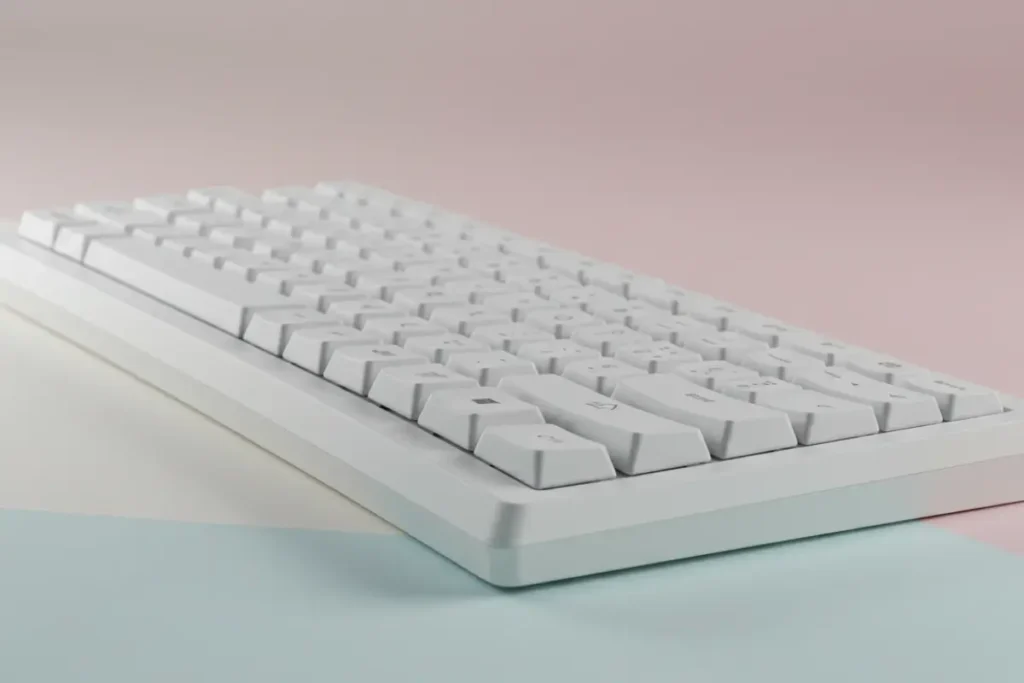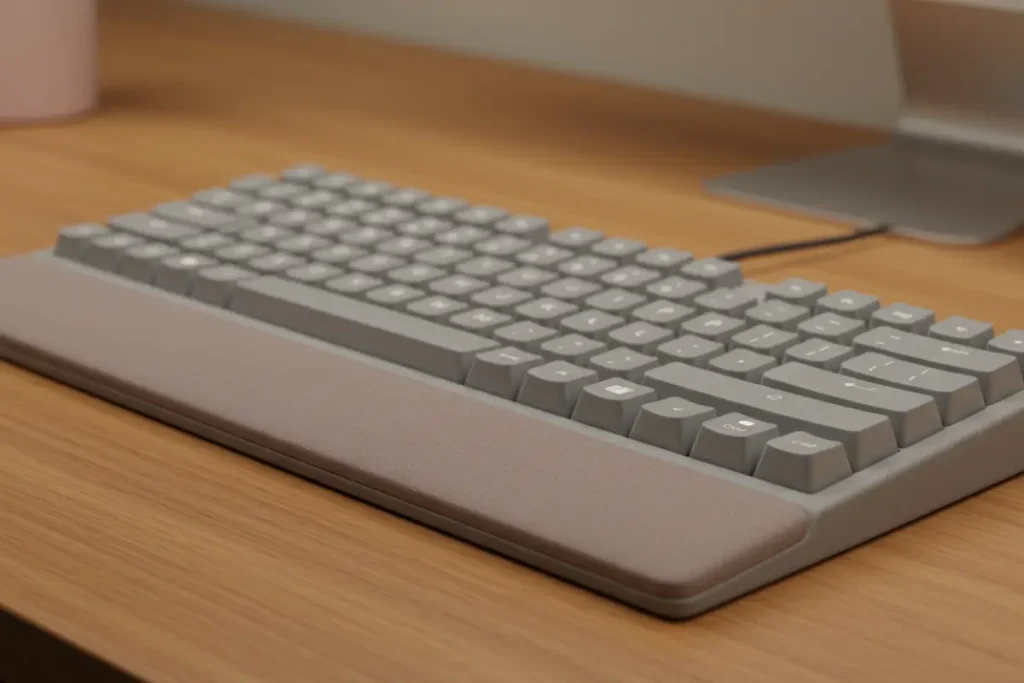Hello, how are you? Today we are going to talk about a definitive guide to making your keyboard even better for daily use.
The good news is that with the right setup, you can make your keyboard experience as smooth and painless as possible. And trust me, as someone who’s obsessed with keyboards, I’ve tested everything to find the best ways to improve comfort.
Why Keyboard Comfort Matters
Before we dive into the setup, let’s talk about why keyboard comfort is so important. If you’ve ever experienced pain after a long typing session, you’re not alone.
A poorly positioned keyboard can lead to wrist strain, hand fatigue, and even long-term issues like RSI (Repetitive Strain Injury). That’s why setting up your keyboard correctly is not just a matter of convenience—it’s essential for your health and productivity.

Benefits of a Proper Keyboard Setup:
- Reduces wrist and hand strain ✅
- Improves typing speed and accuracy ⚡
- Enhances overall productivity 💼
- Prevents long-term injuries 🏥
- Boosts gaming performance 🎮
Step-by-Step Guide to the Perfect Keyboard Setup
1️⃣ Adjust Your Desk and Chair Height
Before even touching your keyboard, you need to get your desk and chair height right. If your chair is too low or too high, your arms and wrists will be at an awkward angle.
Ideal Chair & Desk Setup:
- Your elbows should be at a 90-degree angle or slightly open.
- Your feet should be flat on the floor or on a footrest.
- Your monitor should be at eye level to prevent neck strain.
2️⃣ Find the Right Keyboard Placement
Many people place their keyboard too far or too close, leading to unnecessary strain.
Best Keyboard Positioning:
- Keep it at elbow height to maintain a neutral wrist position.
- Place it centered with your body—your spacebar should align with your belly button.
- If using a full-size keyboard, avoid reaching too far for the mouse by keeping it close.

3️⃣ Adjust the Keyboard Angle
This is one of the most overlooked factors! Many keyboards come with built-in feet that raise the back, but this is actually worse for your wrists. Instead, you should aim for a flat or slightly negative tilt.
Best Keyboard Angles for Comfort:
| Tilt Angle | Comfort Level |
|---|---|
| Negative tilt (-5° to -10°) | Best for wrist health ✅ |
| Flat (0°) | Good for most users 👍 |
| Positive tilt (5° to 10°) | Can cause wrist strain ⚠️ |
4️⃣ Use a Wrist Rest (But Not the Wrong Way!)
A wrist rest can be a game-changer, but only if used correctly. Resting your wrists on it while typing can actually cause more strain.
How to Use a Wrist Rest Properly:
- Use it only when resting, not while typing.
- Choose a soft, memory foam rest to reduce pressure.
- Position it in front of your keyboard, not under your wrists while typing.
5️⃣ Choose the Right Keyboard for Comfort
Not all keyboards are created equal! Some are far more comfortable than others.
Best Types of Keyboards for Comfort:
- Ergonomic Keyboards – Designed for natural hand positioning 🖐️
- Split Keyboards – Allow customizable hand placement 💡
- Mechanical Keyboards – Offer better feedback and reduce finger fatigue ⌨️
- Low-Profile Keyboards – Reduce strain from high keypresses 📉
🔗 Check out the best ergonomic keyboards here

Extra Tips to Maximize Keyboard Comfort
🏆 Optimize Your Typing Technique
Even with the best setup, poor typing habits can cause discomfort.
- Avoid resting your wrists on the desk while typing.
- Keep your fingers relaxed and don’t bottom out keys too hard.
- Use all your fingers instead of just a few to type.
🔥 Reduce Key Travel Distance
If you’re using a high-travel mechanical keyboard, switching to one with adjustable actuation points can help reduce strain.
🎮 For Gamers: Customize Your Keybinds
Gaming for long hours? Set up custom keybinds to reduce excessive movement and make your gaming experience way more comfortable.
FAQs 🔽
➜ How do I know if my keyboard setup is comfortable?
If you can type for long periods without wrist pain or discomfort, you’re on the right track. If you feel tension, try adjusting your keyboard height, angle, and hand position.
➜ Are mechanical keyboards better for comfort?
Yes! Mechanical keyboards provide better feedback and require less force to press, reducing strain. Check out our best mechanical keyboards for comfort!
➜ What is the best keyboard tilt angle?
A slight negative tilt (-5° to -10°) is considered the best for wrist health. Avoid using the built-in keyboard feet that raise the back too much!
➜ Should I use a wrist rest while typing?
No! A wrist rest should only be used when resting your hands, not while typing. Keeping your wrists elevated while typing is the best practice.
See More
- Glorious GMMK Pro Review: Still Worth It in 2025?
- Keychron vs Razer: Productivity or Gaming?
- WASD Keyboards You Can Fully Customize (Fonts, Colors, Switches!)
Conclusion: Get Comfortable, Type Better!
Setting up your keyboard for comfort isn’t just a luxury—it’s a necessity. By following these simple adjustments, you can type more efficiently, reduce fatigue, and protect your hands for years to come.
So this is all the information I think is necessary for you to make your keyboard better. I would separate more things but I think that would be too much information. It’s good enough.
👉 Did you find this guide helpful? Drop a comment below and share your keyboard setup tips!
🚀 Also, don’t forget to share this article with your friends who spend hours typing every day!
📌 For more keyboard guides, check out Keyboards Technology!
🎮 Join Our Discord Community!
Are you passionate about keyboards, gaming, and tech? Come hang out with fellow enthusiasts, ask questions, share your setup, and stay updated with our latest content!
👉 Join Now

